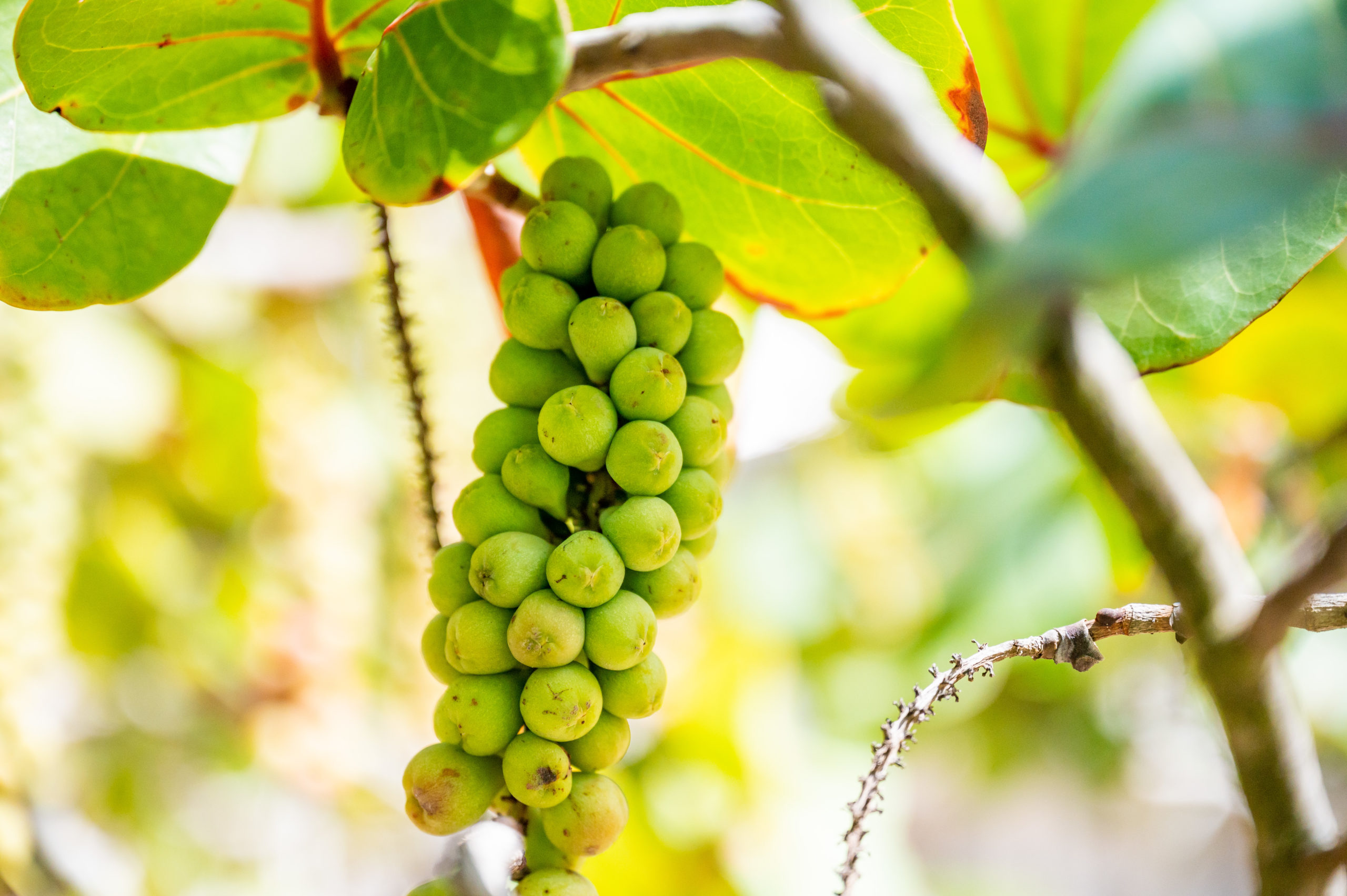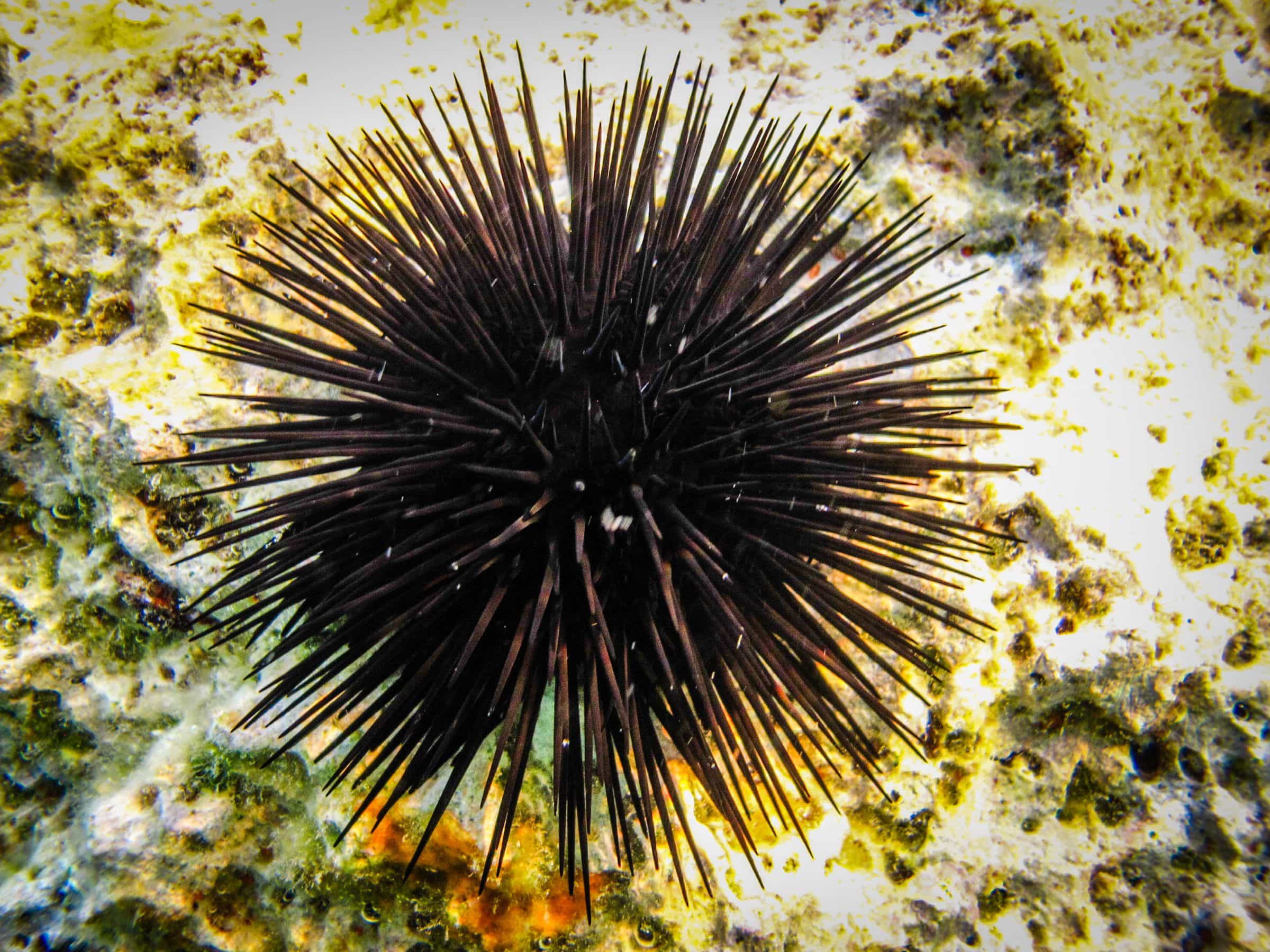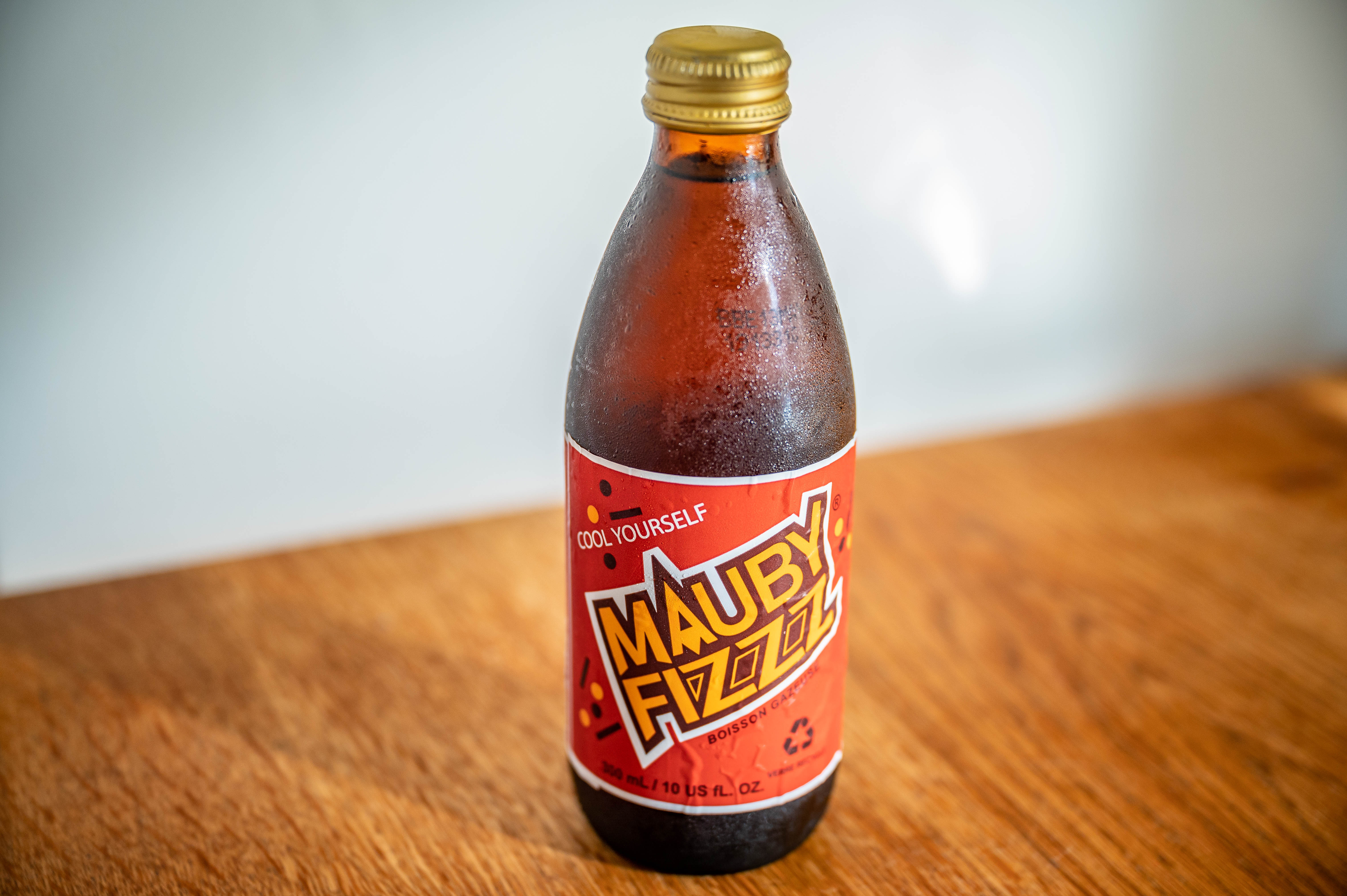Sea Grapes: Feel Free to Savor This Taste of the Caribbean
If there’s one West Indian fruit that could use an image makeover or some good PR it’s the much-maligned sea grapes.
It’s not that they’re ugly, or smelly, or anything like that. The tree upon which it grows isn’t a nuisance either. In fact, when tamed, these trees make a rather attractive hedge. So why are people so uneasy around this ubiquitous Caribbean fruit?
The main image problem revolves around a lie long-held in some parts of the Caribbean: sea grapes are poisonous. But for a moment, let’s set aside the question of “can you eat these?” And let’s get some facts straight.
What are sea grapes?
Interestingly sea grape plants, aka uva de playa aka raisin bord de mer aka coccoloba uvifera, are actually members of the buckwheat family. That puts them in the same general family as rhubarb and even sorrel.
(Interesting fact, there’s another sea grape on the other side of the planet! It’s also called caulerpa lentillifera aka green caviar. This is an edible seaweed from the Pacific best enjoyed with a little soy sauce, but that’s a story for Uncommon Japan.)
Unlike coconut trees, which sea grapes often share the shorelines with, these trees are Caribbean natives. They can trace their lineage back millions of years making them perfectly adapted to living in the West Indies.
Like many West Indians, sea grape trees are extremely hardy. Even droughts can’t fell them. They’re also wind resistant and tolerant of salt. So, they can flourish even in extreme coastal environments when exposed to the ever-present Caribbean trade winds, salty air, and punishing sun.
No wonder you generally see them growing along the shorelines from Trinidad to The Bahamas and on up to South Florida.
Besides being tough, they’re also incredibly useful. Thanks to their wide, rounded leaves that can reach up to 11 inches long and sprawling branches, they’re excellent shade providers. And owing to their tenacity, sea grapes roots reduce sand erosion—keeping our beaches intact all the while beautifying coastal areas.
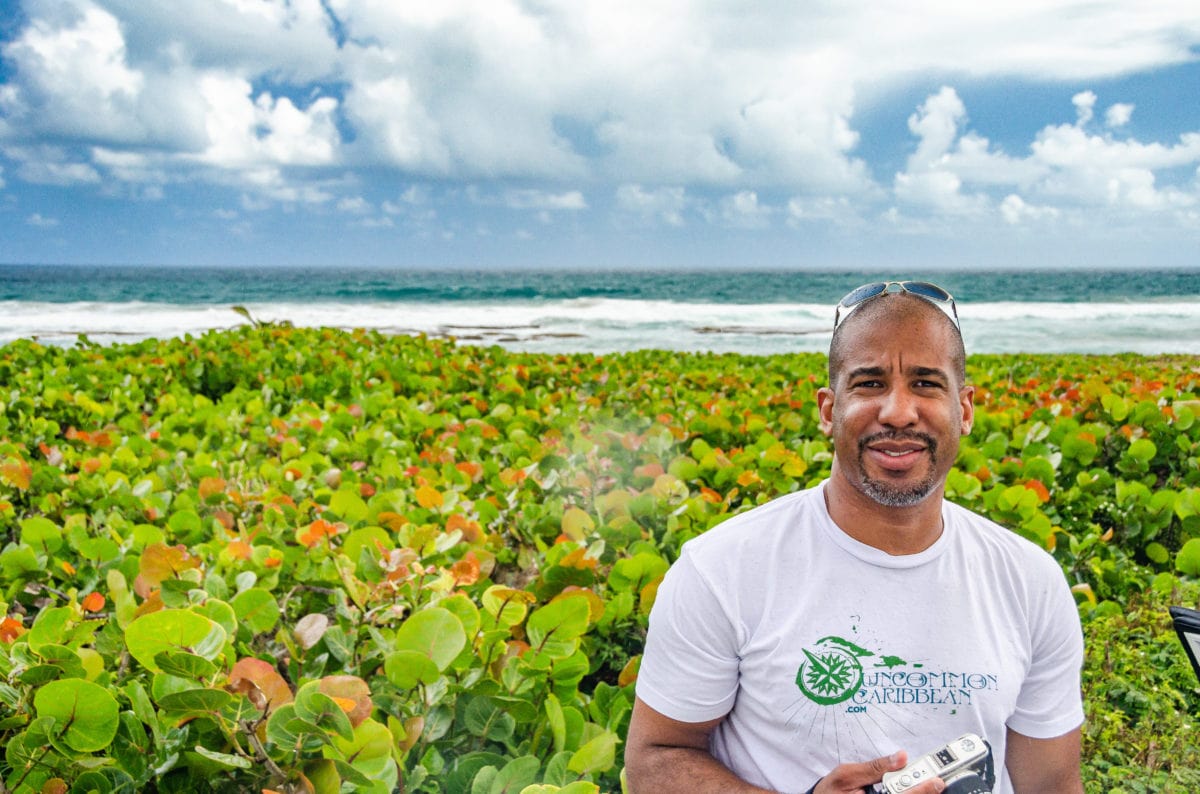
These sea grape trees were manicured down to a nice manageable size. Combined with the location on the eastern coast of Barbados, they should remain fairly low-growing. Though left to their own devices inland and away from the persistent wind and salt, they could explode to heights in excess of 50 feet!
Sea grape trees basically eke out the best living they can with what they’re given. But what if you’re given a handful of sea grapes? Should you eat ’em?
Are sea grapes edible?
OK, back to that lie we mentioned.
Now, we’re not sure where the lie started, or when, but I clearly remember being scolded by my elders during childhood visits to the beach in St. Croix over the supposed dangers associated with consuming these ubiquitous island treats.
But sea grapes are everywhere, and we couldn’t just leave them alone. So, instead of eating them, my brothers, friends, and I would pelt them at each other. This may have been better than using sand, but I’m straying way off course here…
Here’s the truth:
Sea grapes are perfectly safe and wonderful to eat.
Well, the ripe ones are wonderful to eat.
It all starts around late Spring. Around this time, you’ll begin to see clusters of white, aromatic flowers begin to appear on long stalks. These can be around a foot long.
Sea grape trees are what they call “dioecious”, meaning that there are separate male and female plants. So, the only way for them to get pollinated is from a different sea grape tree. Of course, our Caribbean bees are more than up to the task.
Before you know it (around in mid-Summer), those clusters of white flowers have turned into little bunches of green grape-like clusters. These little fruits have a bit of a fat pear shape and tend to be about the size of a marble.
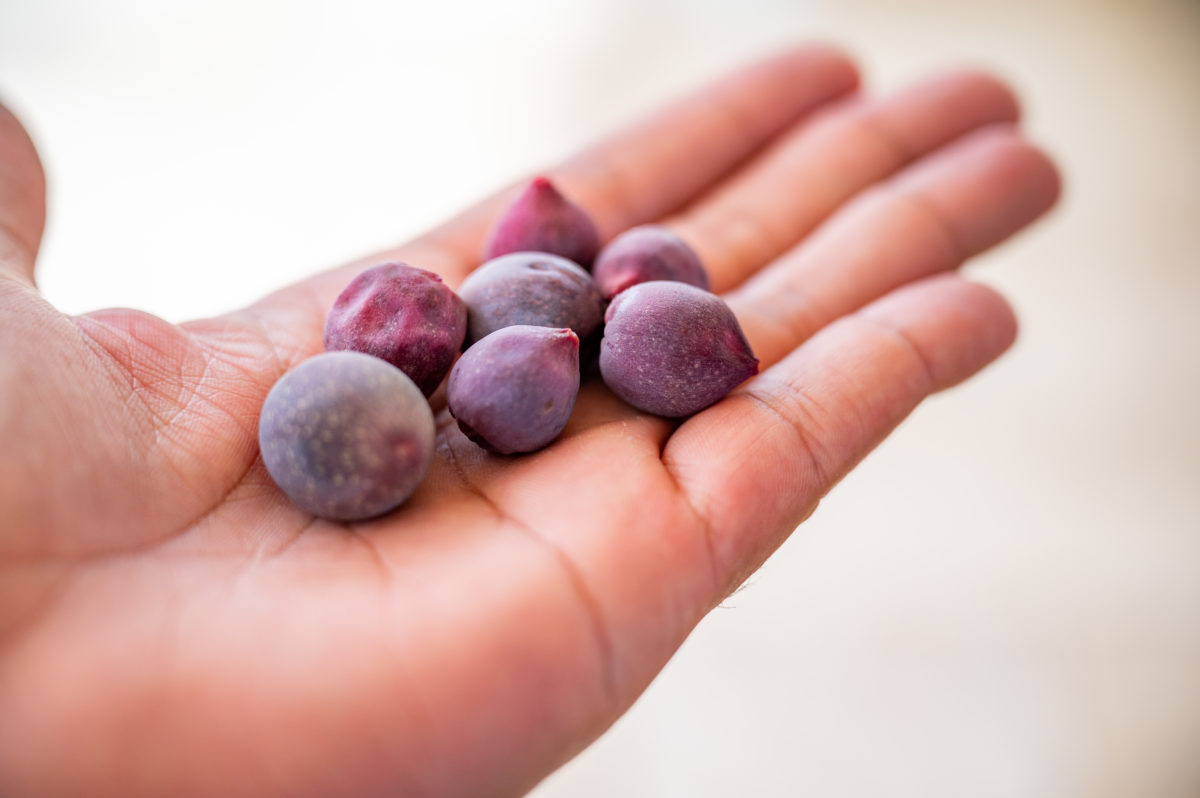
Now we wait. Because those green fruits are known to hang around on trees for a lot longer than you’d think. But just give it some time, and eventually, those green sea grapes will transform into a dark reddish, almost burgundy color. Now, these are the sea grapes you need to try!
(Green ones like those pictured above are better left for kids’ pelting games.)
What do sea grapes taste like?
The first thing to know when you’re ready to sample some sea grapes if that they taste very little like the regular grapes we all know from the grocery store, favorite bottle of wine, and this little cocktail. Eaten raw, the taste is a mix of sweet and acidic flavors that I wouldn’t say is my favorite (this is), but it works when you’re enjoying a late-summer beach lime and need a little nourishment.
And I do mean little.
Each “grape” doesn’t have much fruit content at all. The majority of each sea grape is one large seed, so this isn’t the most filling fruit around either.
Still, it’s not a bad treat, and one you certainly should not be afraid to try next time you’re in the islands between August and October… no matter what the elders say!
